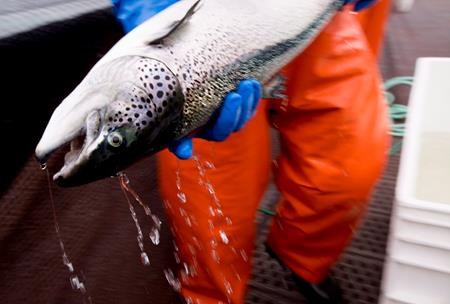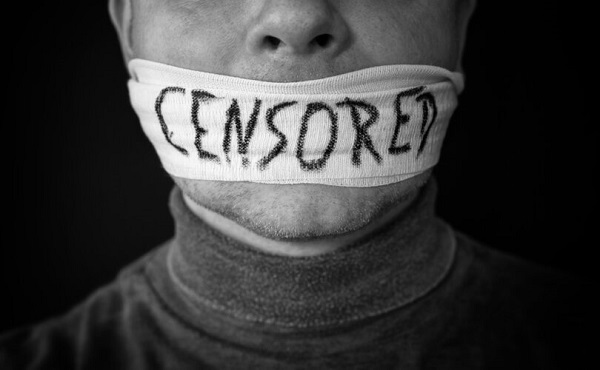Alberta
Global salmon farm company with B.C. ties backs land-based aquaculture in Japan

VICTORIA — The backing of a land-based salmon farm in Japan by a global company with ties to ocean fish farms in British Columbia has Indigenous and conservation groups calling on the federal government to accelerate its transition away from open-net farms.
The international tide in aquaculture is shifting toward land-based salmon farms, and the sooner Canada gets on board the better for the protection of threatened wild salmon and the future of aquaculture in B.C., say representatives of the 120-member B.C. First Nation Wild Salmon Alliance and non-profit group Wild Salmon Forever/Wild First.
“Canada really has to decide at this point if it wants wild Pacific salmon or if it wants this dirty, harmful industry. It can’t have both,” Tony Allard, founder of Wild Salmon Forever/Wild First, said in an interview. “That’s how I see it. It’s hard to talk your way out of it.”
Open-net fish farms off B.C.’s coast are a flashpoint, with environmental groups and some Indigenous nations saying the farms transfer disease to wild salmon, while the industry and some local politicians say thousands of jobs are threatened if operations are phased out.
Earlier this month, federal Fisheries Minister Joyce Murray announced plans to extend a consultation period for a transition plan to shift away from open-net salmon farms in B.C. by 2025.
Murray announced last February the government would not renew licences for 15 open-net Atlantic salmon farms around B.C.’s Discovery Islands.
This month, she said consultations for 79 other open-net farms will now continue through the summer, with a transition plan decision coming at an unannounced date.
“They must also realize that this is where the industry’s going,” Bob Chamberlin, First Nation Wild Salmon Alliance spokesman, said in an interview. “No one logs like they used to. No one mines like they used to. Everything evolves and it’s time for this industry to do the same.”
He said when he visited Norway more than a decade ago, salmon farm industry officials there said they operate open-net fish farms in B.C. because they are permitted by the government.
“That was the last time I went to Norway to speak to them,” he said. “I realized that the fight was at home.”
Chamberlin said he’s now more convinced than ever about having salmon farms removed from B.C. waters after learning about the land-based project near Tokyo being built with financial backing from the Norwegian company, Grieg Group, which has investment ties to Grieg Seafood of Campbell River.
Grieg Seafood operates a fish hatchery, 22 ocean salmon farms and employs about 200 people in B.C.
Amy Jonsson, Grieg Seafood communications director, said in a statement that Grieg Seafood of Campbell River did not invest in the Norwegian-based Proximar Seafood land-based salmon farm project in Japan.
She said Grieg Group of Norway is Greig Seafood’s main investor and a Proximar Seafood shareholder.
A Proximar Seafood spokesman could not be reached for comment about the estimated $88 million land-based salmon farm project, but the company’s website said the farm is located about an hour’s drive from Tokyo near Mount Fuji and will produce up to 5,300 tonnes of farmed Atlantic salmon annually.
Jonsson said transitioning the industry from open-net farms to land-based remains challenging on several fronts, technically and financially.
“To farm the entire production cycle on land has not yet been proven viable at a commercial scale,” she said in the statement. “Developing the technology and competence is the first challenge that needs to be solved.”
Jonsson also said once land-based technology does become viable, facilities will likely be located closer to their markets, which could result in job losses in rural communities.
The B.C. Salmon Farmer’s Association, which represents about 95 per cent of the province’s fish farm producers, said an economic analysis commissioned by the provincial government concluded shifting to land-based salmon farming could cost up to $2.2 billion, and production and profit of the product was elusive.
“To move the entire sector on land isn’t a realistic option, nor is it required to protect wild salmon,” said association president Brian Kingzett in a statement last February. “The federal government’s numerous science assessments have confirmed Atlantic salmon farms pose no more than a minimal risk to wild salmon abundance and diversity under the current fish health management practices.”
Kingzett was not available for further comment.
Allard, who operates a private investment company in West Vancouver, said he supports salmon farming, but not open-net ocean farms.
“I’m a capitalist,” he said. “I can see there’s a need there and a business there, but you can’t base your business on polluting for free and harming an iconic keystone species. The longer we dither on embracing what’s now proven technology and play to our advantages, the more we’re likely to squander our first-mover advantage on the Pacific coast.”
A statement from Murray’s office at Fisheries and Oceans Canada, said “Canada can be a global leader in sustainable aquaculture, while also making sure we protect keystone species like wild Pacific salmon.”
This report by The Canadian Press was first published June 15, 2023.
Dirk Meissner, The Canadian Press
Alberta
Red Deer Justice Centre Grand Opening: Building access to justice for Albertans

The new Red Deer Justice Centre will help Albertans resolve their legal matters faster.
Albertans deserve to have access to a fair, accessible and transparent justice system. Modernizing Alberta’s courthouse infrastructure will help make sure Alberta’s justice system runs efficiently and meets the needs of the province’s growing population.
Alberta’s government has invested $191 million to build the new Red Deer Justice Centre, increasing the number of courtrooms from eight to 12, allowing more cases to be heard at one time.
“Modern, accessible courthouses and streamlined services not only strengthen our justice
system – they build safer, stronger communities across the province. Investing in the new Red Deer Justice Centre is vital to helping our justice system operate more efficiently, and will give people in Red Deer and across central Alberta better access to justice.”

Government of Alberta and Judiciary representatives with special guests at the Red Deer Justice Centre plaque unveiling event April 22, 2025.
On March 3, all court services in Red Deer began operating out of the new justice centre. The new justice centre has 12 courtrooms fully built and equipped with video-conference equipment to allow witnesses to attend remotely if they cannot travel, and vulnerable witnesses to testify from outside the courtroom.
The new justice centre also has spaces for people taking alternative approaches to the traditional courtroom trial process, with the three new suites for judicial dispute resolution services, a specific suite for other dispute resolution services, such as family mediation and civil mediation, and a new Indigenous courtroom with dedicated venting for smudging purposes.
“We are very excited about this new courthouse for central Alberta. Investing in the places where people seek justice shows respect for the rights of all Albertans. The Red Deer Justice Centre fills a significant infrastructure need for this rapidly growing part of the province. It is also an important symbol of the rule of law, meaning that none of us are above the law, and there is an independent judiciary to decide disputes. This is essential for a healthy functioning democracy.”
“Public safety and access to justice go hand in hand. With this investment in the new Red Deer Justice Centre, Alberta’s government is ensuring that communities are safer, legal matters are resolved more efficiently and all Albertans get the support they need.”
“This state-of-the-art facility will serve the people of Red Deer and surrounding communities for generations. Our team at Infrastructure is incredibly proud of the work done to plan, design and build this project. I want to thank everyone, at all levels, who helped make this project a reality.”
Budget 2025 is meeting the challenge faced by Alberta with continued investments in education and health, lower taxes for families and a focus on the economy.

Quick facts
- The new Red Deer Justice Centre is 312,000 sq ft (29,000 m2). (The old courthouse is 98,780 sq ft (9,177 m2)).
- The approved project funding for the Red Deer Justice Centre is about $191 million.
Alberta
CPP another example of Albertans’ outsized contribution to Canada

From the Fraser Institute
By Tegan Hill
Amid the economic uncertainty fuelled by Trump’s trade war, its perhaps more important than ever to understand Alberta’s crucial role in the federation and its outsized contribution to programs such as the Canada Pension Plan (CPP).
From 1981 to 2022, Albertan’s net contribution to the CPP—meaning the amount Albertans paid into the program over and above what retirees in Alberta received in CPP payments—was $53.6 billion. In 2022 (the latest year of available data), Albertans’ net contribution to the CPP was $3.0 billion.
During that same period (1981 to 2022), British Columbia was the only other province where residents paid more into the CPP than retirees received in benefits—and Alberta’s contribution was six times greater than B.C.’s contribution. Put differently, residents in seven out of the nine provinces that participate in the CPP (Quebec has its own plan) receive more back in benefits than they contribute to the program.
Albertans pay an outsized contribution to federal and national programs, including the CPP because of the province’s relatively high rates of employment, higher average incomes and younger population (i.e. more workers pay into the CPP and less retirees take from it).
Put simply, Albertan workers have been helping fund the retirement of Canadians from coast to coast for decades, and without Alberta, the CPP would look much different.
How different?
If Alberta withdrew from the CPP and established its own standalone provincial pension plan, Alberta workers would receive the same retirement benefits but at a lower cost (i.e. lower CPP contribution rate deducted from our paycheques) than other Canadians, while the contribution rate—essentially the CPP tax rate—to fund the program would likely need to increase for the rest of the country to maintain the same benefits.
And given current demographic projections, immigration patterns and Alberta’s long history of leading the provinces in economic growth, Albertan workers will likely continue to pay more into the CPP than Albertan retirees get back from it.
Therefore, considering Alberta’s crucial role in national programs, the next federal government—whoever that may be—should undo and prevent policies that negatively impact the province and Albertans ability to contribute to Canada. Think of Bill C-69 (which imposes complex, uncertain and onerous review requirements on major energy projects), Bill C-48 (which bans large oil tankers off B.C.’s northern coast and limits access to Asian markets), an arbitrary cap on oil and gas emissions, numerous other “net-zero” targets, and so on.
Canada faces serious economic challenges, including a trade war with the United States. In times like this, it’s important to remember Alberta’s crucial role in the federation and the outsized contributions of Alberta workers to the wellbeing of Canadians across the country.
-

 2025 Federal Election2 days ago
2025 Federal Election2 days agoStudy links B.C.’s drug policies to more overdoses, but researchers urge caution
-

 Business2 days ago
Business2 days agoIs Government Inflation Reporting Accurate?
-

 2025 Federal Election2 days ago
2025 Federal Election2 days agoConservatives promise to ban firing of Canadian federal workers based on COVID jab status
-

 International2 days ago
International2 days agoPope Francis Got Canadian History Wrong
-

 Environment2 days ago
Environment2 days agoExperiments to dim sunlight will soon be approved by UK government: report
-

 2025 Federal Election2 days ago
2025 Federal Election2 days agoCarney’s Hidden Climate Finance Agenda
-

 2025 Federal Election2 days ago
2025 Federal Election2 days agoWhen it comes to pipelines, Carney’s words flow both ways
-

 Censorship Industrial Complex2 days ago
Censorship Industrial Complex2 days agoIs free speech over in the UK? Government censorship reaches frightening new levels





